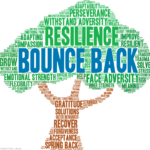As a rheumatologist, I recognize my role in that by upholding the health of those who may have fallen on harder times. By helping direct therapy and expanding access to treatment options, I am helping others find hope in their everyday lives.
In those ways, finding hope isn’t merely a fleeting thought during a stroll—it’s a necessary mindset that must be reinforced time and again. Like well-worn paths in snow, we must make sure that hope leaves footprints that enable others to find the way. After all, hope for the future is what drives us to continue investing our time and energy, to persevere through difficult cases and situations and to celebrate the seemingly small triumphs alongside our patients.
In every moment that we encourage a patient, adjust a treatment or review the latest studies, we are cultivating hope in the future.
2. The Tenacity of Hope
Once we find that tiny atom of hope, we have to build on it. In our society, there’s a connotation that hope is fragile thing and holding on to it is irrational. Yet if hope were indeed fragile, we wouldn’t survive long in the field of medicine. The practice of rheumatology, like life, demands a resilient form of hope—one that can withstand setbacks and adapt in the face of adversity.
Rheumatology patients, perhaps more than those in many other fields, are sources of inspiration in how they demonstrate the tenacity of hope each time they commit to treatment, reevaluate their goals or continue to show up for appointments even when they may not feel like it. Through these actions, our patients teach us about the kind of hope that can endure the rigors of hardship.
Hope, in this manifestation, is not fragile but a hardened form of resilience and resistance. If something so ephemeral can give patients the strength to get up and try again after a setback, to adjust to the evolving limitations of the human body and to relish moments of joy when possible, then we, as rheumatologists, can reciprocate by engaging in our own sense of hope. There is no doubt that we share in our patients’ disappointments, but we can also absorb their optimistic attitudes and positive dispositions. In turn, this tenacity of hope reminds us to keep moving forward with our patients, even when the path is unclear or the results aren’t exactly what we’d hoped for.



